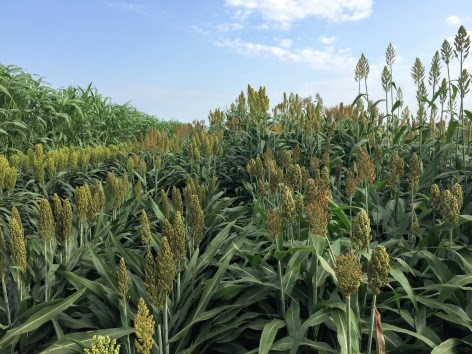News Bits
Gordon W. Davis has had a larger impact on the College of Agricultural Sciences & Natural Resources than just about anyone else.
A local businessman who spent 10 years as an associate professor in the college, Davis and his wife, Joyce, have given a $44 million donation, which represents the single largest philanthropic donation to Texas Tech in school history and is one of the largest investments in people and programs in an agricultural college in the U.S.
The gift will fund three areas within the college:
• A $25 million endowment that will directly benefit the college;
• A $4 million gift to establish the Gordon and Joyce Davis Endowment for Excellence in Meat and Food Science; and
• A $15 million gift from the Gordon W. Davis estate to benefit future educational efforts within the college.
To honor this generosity, Texas Tech University is renaming the college the Gordon W. Davis College of Agricultural Sciences & Natural Resources.
Agricultural producers and landowners can sign up soon for the Conservation Reserve Program (CRP), a cornerstone conservation program offered by the U.S. Department of Agriculture (USDA) and a key tool in the Biden-Harris Administration effort to address climate change and achieve other natural resource benefits. The General CRP signup will run from Jan. 31 to March 11, and the Grassland CRP signup will run from April 4 to May 13.
Several agribusinesses have suffered cyberattacks in recent months including the nation's largest private seed company, Stine Seed.
President Myron Stine tells Brownfield there was a sophisticated cyberattack on their data systems January 9th.
"We had never gone through something like that, so we were very very careful. We dotted our I's and crossed our T's. And the FBI was very helpful, just instantly. There was really no waiting around, there was no 'we'll get back to you tomorrow' or anything. They were right on it right away."
He says the company quickly reached out to sales reps and dealers.
"I would tell our customers that it's a common thing. There wasn't any real heavy damage at all, in fact there was little or no damage. But there could've been. And I think everybody should just doublecheck and think about 'yes it could happen to me."
Stine says when agriculture is targeted, it might be because cyber attackers view farmers and ag companies as easy prey.
When asked by Brownfield if Stine Seed Company is "full steam ahead" as it prepares for the upcoming growing season, Stine replied "absolutely."
Check out the four newest All-American Selections plant variety winners by clicking here
Ukraine is a key player in global agriculture, and how these conflicts play out will have international impacts. Ukraine has more than 41.5 million hectares (or 102.5 million acres) of agricultural land that cover 70% of the country.
In 2020, Ukraine's agriculture sector generated approximately 9.3% of GDP. Crop farming, which accounts for 73% of agricultural output, dominates Ukrainian agriculture, according to the International Trade Administration.
The country's main crops are sunflowers, corn, soybeans, wheat and barley. Globally, Ukraine ranks:
• 1st in global sunflower production (For 2021/22 Ukraine sunflower seed production is estimated at a record 17.5 MMT)
• 6th in global corn production. (For 2021/22 Ukraine corn production is estimated at a record 42 MMT)
• 6th in global barley production
• 7th in global rapeseed production
• 9th in global soybean production
• 9th in global wheat production
Ukraine has been a global supplier of wheat, corn and sunflower/sunoil, says Joseph W. Glauber, senior research fellow for the markets, trade and institutions division at the International Food Policy Research Institute.
This year, Ukraine is forecast to account for 12% of global wheat exports, 16% for corn, 18% for barley and 19% for rapeseed. The share of agriculture in export revenues for Ukraine increased from 26% in 2012 to 45% in 2020 amounting to $22.2 billion.
 Under the hood: How environment and genomes interact in plant development
Under the hood: How environment and genomes interact in plant development Under the hood: How environment and genomes interact in plant development
Under the hood: How environment and genomes interact in plant development